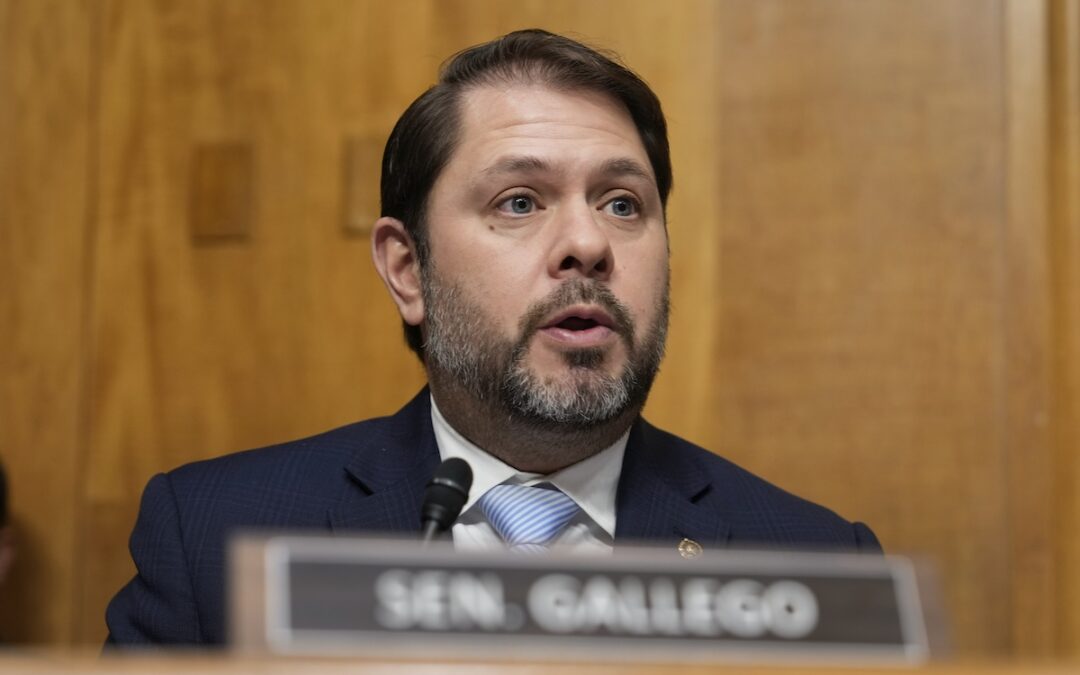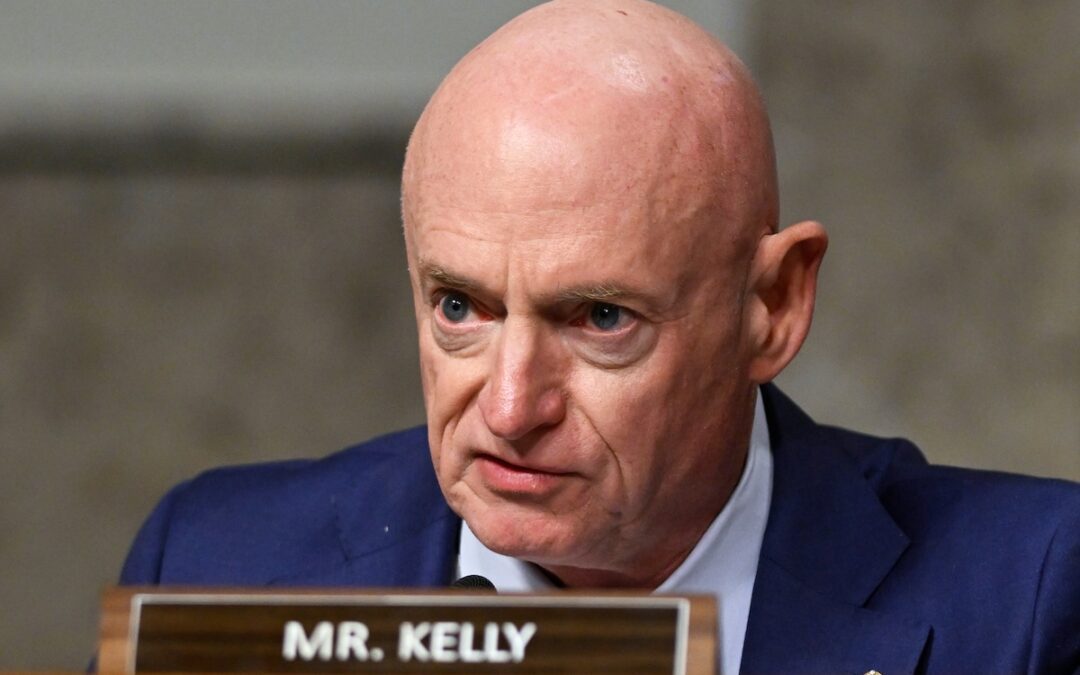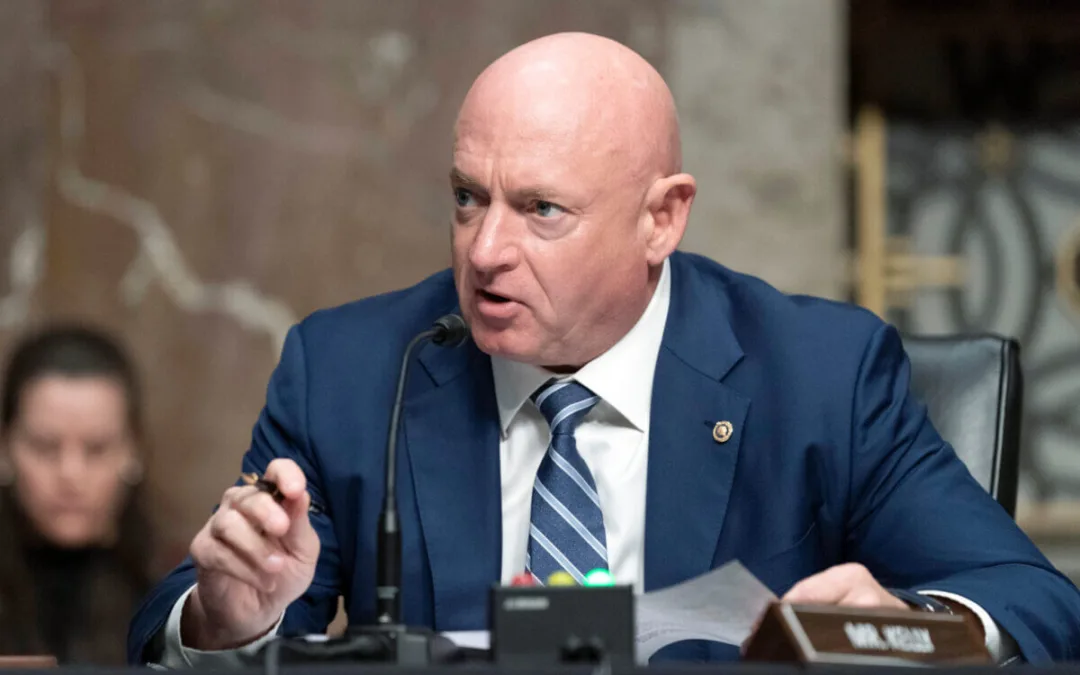
President Donald Trump speaks with Cabinet members and others after signing the One Big Beautiful Bill Act on the South Lawn of the White House, Friday, July 4, 2025, during the 4th of July picnic. (Official White House Photo by Molly Riley)
WASHINGTON – The One Big Beautiful Bill includes the largest tax cuts in U.S. history. Whether it’s actually “beautiful” is in the eye of the beholder.
At every income level taxes should subside. That’s a big selling point from President Donald Trump and fellow Republicans who pushed the law through Congress with no Democratic support. It will benefit everyone.
But the biggest cuts go to the wealthiest taxpayers – the ones who pay the lion’s share of taxes. For most families the savings will be miniscule in comparison, in raw dollars and as a share of income. And millions will lose subsidized health insurance and other benefits.
Want Arizona news in your inbox each morning? Sign up for our free newsletter.
Critics see a plan that widens income inequality and, worse, offsets tax cuts for the wealthy with draconian spending cuts that hit lower-income households.
It’s a “very clear upwards distribution of wealth” funded by “the largest cuts to our social programs we have ever seen,” said Samantha Sanders, director of government affairs and advocacy at the liberal Economic Policy Institute.
Republicans are “saying we think it is more important to give the maximum possible tax cuts to the top 10%, the top 5% and the top 1% of households,” she said.
Democrats intend to leverage the fallout as they try to win back Congress next year. The party launched an interactive website Wednesday, Trumptax.com, that highlights the impact of Trump’s tax cuts and tariff policies in each state.
Democratic Party chair Ken Martin called the new law the “largest redistribution of wealth and the largest cut to health care in Arizona history.”
Trump and fellow Republicans view the new law as a major achievement. They also will make it a central issue in the midterms, touting that it holds down or rolls back taxes for nearly all Americans to some degree.
Letting taxpayers keep more of their own money means they can invest and create jobs, said Alex Muresianu, senior policy analyst at the Tax Foundation.
“That would drive additional productivity growth and grow wages in the long run,” he said.
Tax cuts skew towards high-income earners
Economists across the political spectrum generally agree that high-income households get the most benefit from tax cuts in the megabill, which will add more than $3 trillion to the national debt over the next decade.
The Tax Policy Center found that 60% of the cuts go to households with income above $217,100. More than a third goes to those making over $460,000.
For households that earn over $1 million, estimates vary from a 3% increase to after-tax income from the Tax Policy Center to 5% from the left-leaning Center on Budget and Policy Priorities.
RELATED: No, China doesn’t own vast swaths of Arizona despite map shown by Trump aides
For middle-income households, the gains are more modest.
A household earning $78,538 – the median in Arizona – will see after-tax income grow as little as 0.5%, per the Center for American Progress, a Democratic think tank, or as much as 2.8% under Tax Foundation projections.
For low-income Americans, most analysts see much smaller after-tax gains: below 1% for those earning $35,000, according to the Tax Foundation, and even less – 0.4% – for those with income below $17,700, which is below the poverty line.
The reasons for this uneven distribution of benefits are complex and include dozens of tweaks to exemptions, deductions and other provisions in the federal tax code.
Upscale benefits
A major element of the new law is that it permanently extends tax cuts Trump signed into law in 2017. That package, too, skewed benefits toward the higher end of the income scale.
One example: the estate tax exemption.
Congress temporarily raised that in 2017, from $5 million per individual to just over $11 million. That and other provisions would have expired this year. The new law raises that exemption permanently to $15 million. The caps will rise with inflation.
For well-to-do families, the exemption can be hugely valuable. The first $15 million is transferred tax-free. Tax then kicks in on a sliding scale, topping out at 40% for every dollar over $16 million.
Just 0.2% of Arizona households have a net worth of over $30 million – the amount a couple filing jointly could shield automatically from the estate tax.
“In general, these are people who are dynastic wealth holders,” said Corey Husak, director of tax policy at the Center for American Progress.
Another provision in the new law that especially benefits wealthier taxpayers involves the state and local tax (SALT) deduction.
The 2017 law capped the SALT deduction at $10,000 per household, a major pinch for homeowners in states with high taxes and high housing costs. Before that, taxpayers who itemized could deduct all of their state income and property taxes when filing to the IRS.
The new law raises the cap to $40,000.
That means big relief to high-income homeowners in states with high property taxes and housing costs, most of which are blue.
Under the 2017 cap, the average itemizer deducted $9,037 in 2022 in California, New Jersey, Connecticut and New York, according to the Bipartisan Policy Center. By comparison, the Arizona average was just $6,925.
Raising the SALT cap mostly benefits households earning between $400,000 and $600,000, according to the Committee For Responsible Federal Budget.
Below $200,000, nearly everyone takes the standard deduction, so those taxpayers are unaffected. At higher income levels the relative benefit shrinks.
Downscale sweeteners
Trump and his allies promoted the Big Beautiful Bill as a package with something for everyone, including tax relief for tipped workers and people who work overtime.
These sorts of provisions helped sell the bill, though critics say they are paltry by comparison and mostly intended to deflect attention from cuts elsewhere.
Among those sweeteners:
- No tax on tips: Restaurant servers, hairdressers and other tipped workers will be able to deduct up to $25,000 in tips from their taxable income.
Arizona has over 108,000 tipped workers.
But more than a third of tipped workers don’t earn enough to owe any federal income tax, according to the Yale Budget Lab. So this provision has limited impact.
Elyanna Calle, president of Restaurant Workers United, said that giving a tax break on tips will be “more harmful because it takes away from the true problem of low base wages”
- Overtime deduction. The new law also delivers on another Trump campaign promise, to shield overtime pay from income tax.
Workers will be able to deduct up to $12,500 in overtime pay from their taxable income.
A worker paid $8 an hour who works on average 10 hours of overtime in a week would see take-home pay grow by 2%, at most, according to the Bipartisan Policy Center.
Roughly 8% of hourly workers and 4% of salaried workers regularly work overtime, according to the Yale Budget Lab.
- Tax break for seniors: The legislation adds a new deduction up to $6,000 for filers 65 and older with income up to $75,000, or double that for couples with income less than $150,000. The deduction phases out and then disappears at $175,000 for single filers and $250,000 for couples.
The Social Security Administration says this provision effectively eliminates income tax on Social Security payments for about 90% of retirees.
Each of these provisions expires in 2028.
That was a way for Republicans to hold down the cost of the law as calculated by the Congressional Budget Office, though political pressure could build to extend them – as it did with the 2017 cuts.
“The ones for wealthier people are going to last,” Sanders said.
Spending cuts that hurt low-income communities
The CBO estimates that the Big Beautiful Bill will add over $3.3 trillion to the national debt.
That torrent of red ink would be even worse if not for massive spending cuts, some of which tend to harm those lower on the economic scale. Among those cuts:
- Medicaid: The law slashes spending on Medicaid by $1 trillion, a program that more than 2.1 million people rely on in Arizona.
- Obamacare: The new law ends subsidies for premiums paid by low and middle income Americans who get their health insurance through a marketplace created under the Affordable Care Act. Combined with the Medicaid cuts, 366,000 Arizonans are likely to lose health coverage, according to the Joint Economic Committee, a bipartisan congressional panel. Nationwide, 11.8 million people could lose coverage, according to CBO.
- Food stamps: Increased work requirements for those receiving food stamps will put 73,000 Arizonans at risk of losing federal food assistance, according to the Center for Budget and Policy Priorities.
“This bill really takes health care and food away from people with low and moderate income,” said Kris Cox, the group’s director of federal tax policy, “and at the same time, showers large benefits on people with very high incomes.”
The Penn Wharton Budget Model, which takes into account cuts to Medicaid and SNAP, says that by 2033 households earning below $18,000 – around 9% of Arizona’s population – will see after-tax income drop 7.4%.
Those with income between $18,000 and $53,000 – around a quarter of Arizona – will see after-tax income dip 2.9% under this model.
- Child Tax Credit for undocumented immigrants: Parents without a Social Security number won’t be eligible for the Child Tax Credit. That credit is worth $2,200 per dependent child. That will affect undocumented parents of 250,000 children in Arizona, many of them U.S.-born American citizens, according to José Patiño, vice president of Education at youth immigrant charity Aliento. The child poverty rate is 16% nationwide and 43% in Arizona in families with at least one undocumented parent. Losing the Child Tax Credit could put even more into poverty, Patiño said.
- Green energy cuts: The new law cuts subsidies for renewables by $500 billion over the next decade, including tax credits for wind and solar created during Joe Biden’s presidency. That will save federal funds but it will also raise annual household energy costs by $165, on average, according to an analysis from Princeton University researchers.
Husak said the cost of the new law, driven by the generosity of the tax cuts aimed at the wealthiest, could trigger a fiscal crisis.
“At some point the debt becomes unmanageable,” he said.
For more stories from Cronkite News, visit cronkitenews.azpbs.org.

Arizona senator targets AI ‘surveillance pricing’ with bill to end online price gouging
Artificial intelligence is making it increasingly easy for companies to track and target consumers, causing price discrepancies among online...

Readers chime in: What do you think of the Pentagon investigating Sen. Mark Kelly?
The Pentagon is investigating Sen. Mark Kelly over a video he participated in that encouraged US troops to defy "illegal orders." Here’s what our...

Pentagon says it’s investigating Sen. Mark Kelly over video urging troops to defy ‘illegal orders’
WASHINGTON (AP) — The Pentagon announced Monday it is investigating Democratic Sen. Mark Kelly of Arizona over possible breaches of military law...

SNAP benefits resume, but new work requirements put 124K Arizona recipients at risk
WASHINGTON – Federal food benefits have been flowing again since the government shutdown ended last week. But for millions of recipients nationwide...





